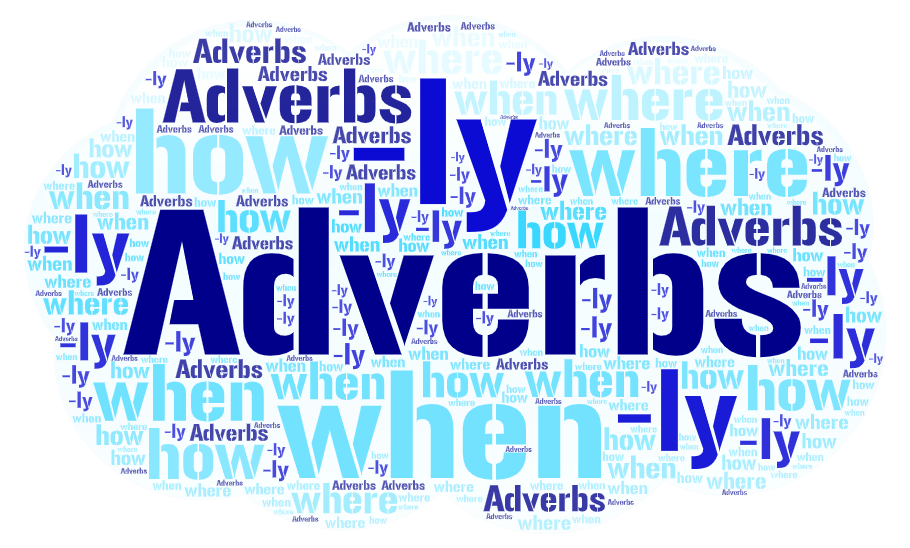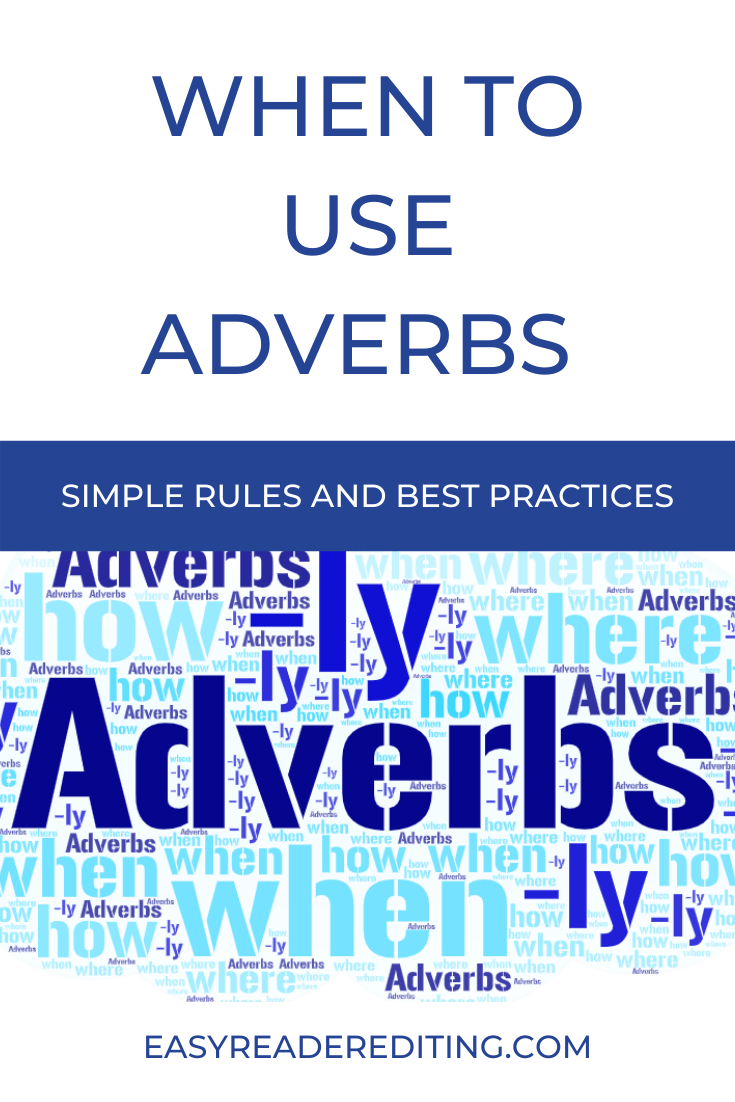When to Use Adverbs and When Not To
Simple rules and best practices
Image credit: Easy Reader Editing via WordArt.com
Schoolhouse Rock not only made my Saturday mornings both fun and educational as a kid, but its catchy songs have stood the test of time. Most adults I know who grew up in the US during the ’70s and ’80s can still sing the classics like "Conjunction Junction" and "I'm Just a Bill" with ease. Thanks to the internet availability of pretty much everything, the younger generation can learn grammar, science, and more without pain.
But a song like "Lolly, Lolly, Lolly Get Your Adverbs Here" makes it sound like adverbs are all fun and games. Maybe this is why some writers tend to use adverbs in abundance . . . until their editors get out the Red Pen of Doom and have at it.
Adverbs aren’t evil, but they’re not a cure-all
Now, hear me out: it's not that editors hate all adverbs. It's just that we recognize them as a sort of cop-out when a writer is too inexperienced or lazy—or ignorant of a better way—to explain something.
Stephen King has this to say about them in his book, On Writing: "The adverb is not your friend. Adverbs . . . seem to have been created with the timid writer in mind." I think it’s safe to say that he’s not exactly a timid writer. He does admit they bother him the most in dialogue tags, and whether you’re a fan of his stories or not, you must admit he gets the emotions across without them.
Even Mark Twain was known to say, "They don't excite me," when referring to adverbs, contending that they are best when far apart.
In short, the fewer, the better.
The misuse of words is what’s really at fault
There are rules that shouldn’t be broken, and then there’s something called “best practice” that is subject to circumstance.
Best practice can vary from person to person, but the important part about it is that it has to make sense.
Take adverbs, for example
Please. Take them all. Take them far away. In fact, anything that ends in -ly should be banished from the language.
Is that what you’ve been told?
Here’s the thing: there are many convincing reasons why you should get rid of as many adverbs as you can, and many convincing reasons why they are not, in fact, from the devil himself.
The most important thing to remember is that this falls under the “advice” column and not the “nonnegotiable rules” column.
What is the best practice for adverbs?
When people rely on adverbs as a bailout, that's where the trouble comes in.
Adverbs are not all bad. They can be useful in so many ways.
But the "manner" adverbs—those which typically end in -ly and somehow end up as dialogue tag enhancers—are a crutch in many cases. If a writer never branches out from the easy adverb, the writing will never grow into something better.
Consider these examples of telling but not showing
The -ly adverb is used to tell us someone is angry.
He left the room angrily.
Can you picture anything here? Is it exciting or descriptive? One person’s anger may be physical and loud; another person may grit their teeth and leave without a single word spoken.
How about this instead?
He threw his phone against the wall and shouldered his brother out of the way as he left the room.
And this second example, again with the -ly adverb to tell us the emotion:
She came to him trustingly.
How about this revision?
She dropped her sippy cup and climbed up beside him on the couch, plopping herself onto his lap as if the seat had been marked "reserved" for her.
There’s a much fuller description here that shows not only the emotion, but gives us a visual to work with. A little more color, if you will. This is where the “show, don’t tell” advice comes from, and it’s what prompts so many writers to panic if they find a sentence that tells.
Do not panic. Listen to me here, because this is important. YOU ARE ALLOWED TO TELL.
You are even allowed to tell with an -ly adverb if you so choose. Sometimes you want to say “she walked quietly to the door” because she didn’t creep, or tiptoe, or sneak. She simply walked quietly and that’s that. It’s okay.
But be alert for the situations where you can say it better.
Adverbs can also cause redundancy
He shouted loudly across the field. She ran quickly to the door. He pounded forcefully on the table.
All these adverbs are redundant. Shouting is loud. Running is fast. Pounding shows force. Remove the adverbs from each of the above sentences and you’ll find you’re not missing a thing.
So who’s right when it comes to adverb use?
There seem to be as many people on the "death to adverbs" side of the picket line as there are "we love our adverbs" sign holders on the other. After all, many adverbs can be helpful in telling us how, when, where, to what degree, and more.
As with anything, a little common sense goes a long way. One person's hard and fast rule is another person's guideline. One writer may use -ly adverbs to great effect, and another may feel crippled by them.
My personal opinion? Adverbs are a legit part of speech that can be used to great effect in the right place at the right time. But as with anything, too much of a good thing ceases to be a good thing.


